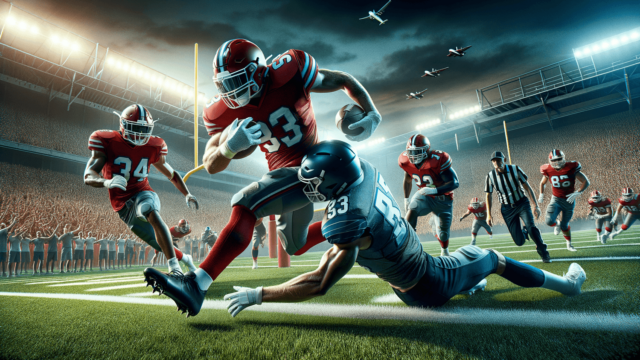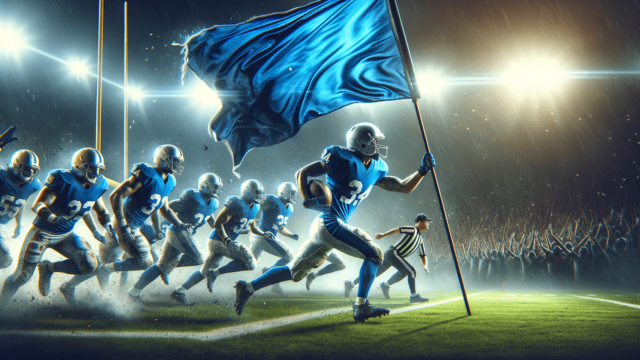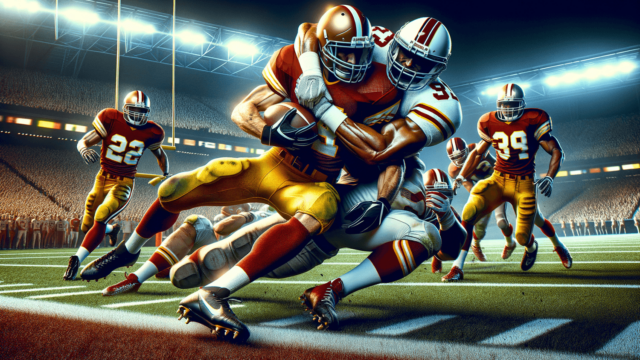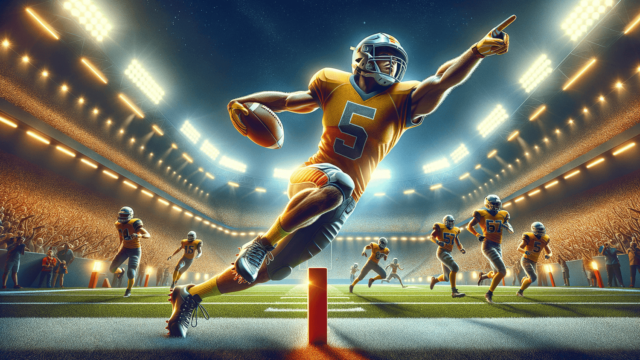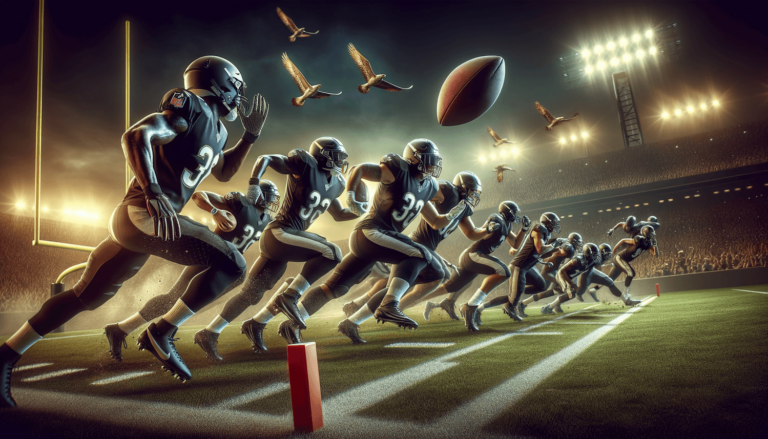
Clipping in football refers to an illegal block, where a player contacts an opponent from behind and at or below the waist. This foul is dangerous and can lead to injuries, so it’s penalized by a 15-yard loss for the offending team.
Understanding Clipping in Football
Clipping is an illegal blocking technique in football that can result in serious injuries to players. To better understand and identify clipping, let’s look at its definition, its consequences, and how it’s different from similar penalties like chop blocks and crackback blocks.
Definition of Clipping
Clipping occurs when a player contacts an opponent from behind and at or below the waist. This move is illegal because it can lead to severe injuries such as torn ligaments, knee injuries, and dislocated joints. Players must engage in a safe and fair manner when attempting to block their opponents.
Penalties for Clipping
When a player is caught clipping, the offending team is penalized by a 15-yard loss. If the foul occurs during a kick or a change of possession, the penalty is assessed from the spot where the foul occurred. If the clip takes place during a running play or after possession has been established, the penalty is enforced from the end of the run or the spot of the foul, whichever is more advantageous to the non-offending team.
How Clipping Differs from Chop Blocks and Crackback Blocks
Though clipping, chop blocks, and crackback blocks all involve illegal contact, they differ in specific aspects:
- Chop Blocks: In a chop block, one offensive player engages an opponent above the waist, while another player simultaneously blocks the same opponent below the waist. This move can cause serious injury to the defensive player’s legs and is penalized with a 15-yard loss.
- Crackback Blocks: Crackback blocks are illegal when an offensive player moves towards the ball and blocks an opponent below the waist, often from the side or the back. This penalty results in a 15-yard loss for the offending team.
While these penalties are similar, it is important to recognize their distinct characteristics to avoid committing fouls and maintain a safe playing environment.
Preventing Clipping Fouls
To prevent clipping fouls and ensure player safety, coaches should emphasize proper blocking techniques, focusing on engaging opponents from the front and above the waist. Drills and practice sessions can help players develop the skills and awareness necessary to avoid dangerous fouls. It is also crucial that referees vigilantly enforce the rules, promoting a fair and safe game for all participants.
Addressing Clipping in Youth Football
Developing correct habits and techniques at an early age is crucial in preventing clipping fouls in football. Coaches at the youth level should prioritize teaching fundamental blocking methods that prioritize safety and fair play. By fostering a culture of sportsmanship and respect for opponents, clipping incidents can be significantly reduced throughout all levels of football.
Clipping in NFL Rules
The National Football League (NFL) is particularly strict on enforcing clipping penalties to protect player safety and preserve the integrity of the game. When an NFL player is found guilty of clipping, a video review may be conducted to determine the extent of the offense and any subsequent penalties. Fines or suspensions may be levied against repeat offenders in order to deter dangerous play.
Incorporating Video Analysis
Utilizing video analysis can help coaches and players identify and correct instances of clipping during training and practice sessions. Analyzing game footage not only highlights areas for improvement but also helps players to understand the potentially dangerous consequences of illegal blocking techniques. Through video analysis, teams can focus on refining their strategies to eliminate clipping and promote a safer game.
Proper Football Equipment for Injury Prevention
Wearing appropriate football equipment can be crucial in minimizing the impact of clipping and other illegal blocks. Helmets, shoulder pads, thigh pads, hip pads, and knee pads serve to protect players from injuries when collisions occur. Ensuring that players are wearing well-fitted, high-quality equipment can play a significant role in reducing the severity and frequency of injuries resulting from clipping and other dangerous plays.
FAQ Section: Clipping in Football
If you still have questions about clipping in football, this FAQ section aims to address the most common queries you may have. Get a deeper understanding of the topic and gain more insight into the consequences and prevention techniques related to clipping.
What is the primary reason for the clipping penalty in football?
The primary reason for the clipping penalty is to ensure player safety by preventing dangerous and potentially injurious plays. Contact from behind and below the waist can lead to serious injuries like torn ligaments, knee injuries, and dislocated joints.
Does the clipping penalty apply to all levels of football?
Yes, the clipping penalty applies to all levels of football, from youth leagues to professional competitions like the NFL. The penalty is enforced universally to promote fair play and protect player safety across all age groups and skill levels.
Is it possible for a defensive player to be penalized for clipping?
While clipping is predominantly associated with offensive players, defensive players can also commit clipping fouls during certain situations like blocked punts, interception returns, or fumble recoveries. The same 15-yard penalty would apply in such cases.
How can players differentiate between legal and illegal blocks?
Legal blocks involve contact from the front and above the waist, while illegal blocks like clipping, chop blocks, and crackback blocks involve contact from behind, below the waist, or a combination of both. Players should engage opponents in a safe and fair manner, avoiding dangerous situations that result in injuries or penalties.
What role do referees play in addressing clipping in football games?
Referees play a crucial role in enforcing rules related to clipping and other fouls. They monitor players’ behaviors and actions on the field and penalize those engaging in dangerous plays. Vigilant officiating helps maintain a safe and fair playing environment for all participants.
Featured Posts
- No pillar pages found.
